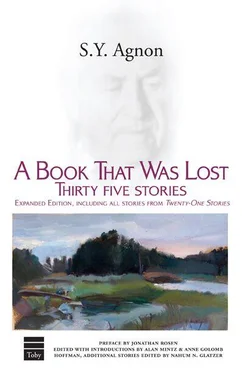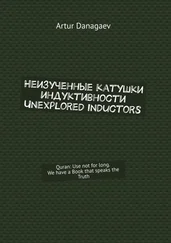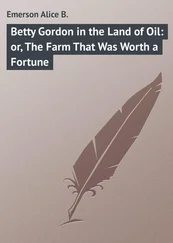The Artist in the Land of Israel
Nor is Hemdat able to resolve an artistic identity for himself. He cites the stories of Rabbi Nahman of Bratslav and thus directs our attention to an important influence on Agnon’s literary development: Rabbi Nahman (1772–1810) told dark tales of enigmatic beauty, which were recorded by his followers. On a more satirical note, Hemdat expresses his scorn for the poet Pizmoni (whose name means “rhymester”), a self-proclaimed leading light of Hebrew literature. Hemdat may lie in bed thinking of translating the nineteenth-century Scandinavian writer Jens Peter Jacobsen, another important influence on Agnon, but he is unable to put pen to paper. This portrait of the artist as a young man uses irony to sketch conflict and indecision, and to draw the contrast between the youth’s vaulting ambitions and his inability to realize them.
“Knots upon Knots” gives us the writer at a later stage in his life, ill at ease in a series of encounters with a variety of individuals and groups, each of which has some connection to books and to writing. “Even I was invited to the craftsmen’s convention,” the opening line of the story announces, but the story that follows describes the failures of the protagonist to enter into any form of community. Indeed, he manages to offend and alienate all those he approaches, suggesting a singularly ambivalent relationship to his vocation. In contrast, the figure of the bookbinder, who stores all the narrator’s unwanted articles and binds his books, suggests a level of integration and a kind of spiritual harmony in his careful preparation of the workroom and the hints that he is about to engage in prayer.
“Knots upon Knots” engages in some historical playfulness underscoring its ironies. The narrator meets in succession two leaders of rival schools of thought and distances himself from each with awkwardly offensive behavior. The interactions of the narrator with these two characters take on an intriguing complexity when we realize that they carry the surnames of two great eighteenth-century rabbis, Eibeschütz and Emden. These two prominent rabbis engaged in a drawn-out feud that split German Jewry. The split began when Jacob Emden accused Jonathan Eibeschütz of being a covert follower of Sabbatai Zvi, leader of the messianic movement that swept seventeenth-century Jewry and continued even after its leader’s apostasy. That Agnon calls one character Eibeschütz and the other Emden, and gives to each one of his own names — Samuel and Joseph — suggests that the conflicts that energize this story are as much internal as they are external.
“Knots upon Knots” is one of the stories included in the Hebrew collection Sefer Hama’asim , which can be translated as both The Book of Deeds and The Book of Tales. Ma’asim is the Hebrew word for “deeds”; the Yiddish mayses refers to tales. Agnon’s title capitalizes on the coincidence. These stories, written largely in the 1930s and 1940s, offer dreamlike scenes of encounters with suggestive figures who either lead the protagonist astray or rebuke him for unspecified lapses. During this period Agnon was sometimes in the habit of transcribing his own dreams and developing stories out of them. “Knots upon Knots” takes its place in this fictional category, demonstrating his capacity to craft a perfectly balanced structure out of suggestive pairs of oppositions.
A pair of stories from the 1930s, “On One Stone” and “The Sense of Smell,” offer delicate portraits of the writer’s relationship to Jewish traditions of writing. It should be noted that “On One Stone” is actually set in eastern Europe. It is in this section, along with “The Sense of Smell,” because both stories highlight the writer’s relationship to mystical traditions of writing. These stories approach the mythical as they position the figure of the writer in relation to wonder-working rabbis of the past and to a conception of writing as magical in its capacity to create worlds. This belief in the special potency of the Hebrew language goes back very far in Jewish tradition. At the beginning of Bereshit Rabbah, the midrash on the Book of Genesis, we find the belief that God looked into the Torah to find the blueprint for Creation. This conception of the special powers of the very letters in which the Torah was written held enormous appeal for Agnon, whose writing plays out a variety of positions in relation to the holy tongue.
The Artist in the Land of Israel
With the model of the world-creating language of Torah before him, Agnon enacts the attempt and failure to attain the linguistic level of the sacred. Each story includes a brief moment of participation that appears to lift language beyond itself, but these are moments that cannot be sustained. The two stories offer tales of the writer that occupy a middle ground between the early stories of Hemdat, the artist as youth (“Hill of Sand”), and the stories that comprise The Book of Deeds , in which nothing happens but the act of telling itself.
“On One Stone,” written in 1934, mimics a passage in The Book of Praises of the Baal Shem Tov , a compilation of stories of the Baal Shem Tov, the eighteenth-century holy man around whose life and works Hasidism developed. The Baal Shem Tov is a luminous figure in hasidic tradition, a wonder-worker whose miraculous deeds are told and retold by his followers. In the source passage in The Book of Praises , the Baal Shem Tov speaks directly to a stone, so that it opens up and he can place his writings in it. Without ever explicitly referring to the Baal Shem Tov, Agnon’s story invokes this act of enclosure in a variety of ways that remind us of the story of the Baal Shem Tov as well as of other stories of wonder-working rabbis.
The first-person narrator of “On One Stone” is a writer, but he opens his story by referring to the days in which he devoted himself to writing about the wonder-working rabbi Adam Baal Shem, a predecessor of the Baal Shem Tov, who used the holy writings in his possession to bring about the redemption of souls in Israel. The narrator tells us how Rabbi Adam Baal Shem went to the forest and sealed his writings in a rock when the time for his death drew near. Emphasizing all the while the profound gap that separates him from the level of Rabbi Adam Baal Shem, the narrator of our story “inadvertently” reenacts a latter-day version of the moment at which the rabbi gave up his writings to a rock. Concerned about finding himself beyond the Sabbath boundary of the town, the narrator goes in search of the writings he had left lying out in the open upon a stone, only to see them swallowed up by that stone before his very eyes. What follows is a scene of radiant wonder that mimics a mystical moment in which word and world are fused. For that brief moment, it is as if the narrator gains access to the language of Creation.
In “On One Stone,” the speaker describes what could almost be considered a wish: were he able to read the writings of Rabbi Adam Baal Shem that were hidden in the rock, he would be able to “join together” worlds out of them. The story thus implies levels of linguistic activity, in order of descending strength, but on the model of a world-creating use of language. “The Sense of Smell,” written in 1937, enters this mythology of writing by building on the traditional belief that language is prior even to Creation. “The Sense of Smell” is a story in which the persona of the author figures as speaker. He refers to himself as the mehabber , meaning “author,” or more literally, “composer,” in the sense of “joiner of words.” And it is that very activity of joining words that the story brings up for question, since it is a dispute over proper linguistic usage that provides the stimulus for the mock-heroic text. In actuality, the story constitutes an engaging response to an annoying incident in which Agnon was rebuked for incorrect word usage by a member of the National Committee on Language. Agnon uses this story to enact a particularly literary form of revenge.
Читать дальше











